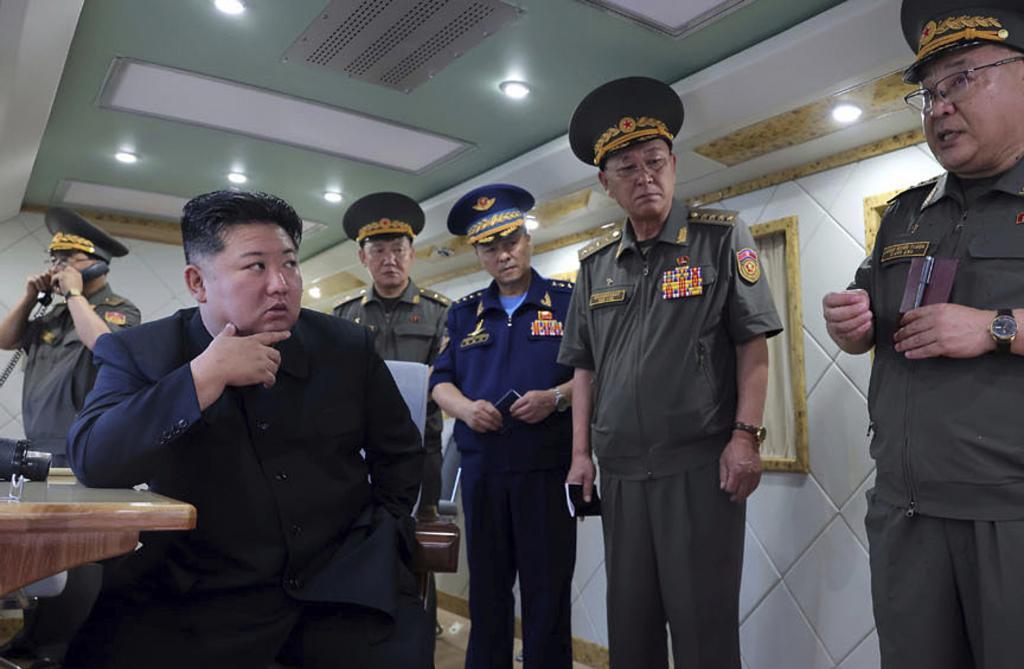And just yesterday, images were released of the Saturday of the Stalinist regime's leader witnessing the test firings of two new air defense missiles, as announced by the state agency KCNA. Although the agency's report did not provide details of the weapons, it emphasized that their "mode of operation and reaction relies on unique and special technology."
Experts argue that Washington's attacks in June on the Iranian nuclear facilities of Fordow, Isfahan, and Natanz, along with Israeli army bombings, fueled North Korea's conviction that its survival depends on continuing to pursue the "unlimited expansion" of its nuclear program, as Kim stated in a speech at the end of 2024.
The regime assistedIran in building the network of underground tunnels where it stores everything from large quantities of ammunition and missiles to uranium enrichment centrifuges, crucial for its nuclear program. The first to speak of this North Korean assistance to Tehran was Alireza Jafarzadeh, a dissident who revealed over a decade ago the locations and characteristics of the Iranian nuclear facilities that were bombed by the United States.
The Stockholm International Peace Research Institute (SIPRI), a leading center for defense and armament research, recently published a study estimating that Pyongyang has around 50 nuclear warheads and enough fissile material to produce up to 40 more. The White House has long warned that the North Korean regime is ready to conduct a new nuclear test, which would be the first since 2017 and the seventh under Kim's leadership of the secretive Asian country.
The U.S. attack on Iran complicated one of the goals President Donald Trump had in his second term: to resume negotiations for the future denuclearization of North Korea. Kim has rejected in recent months any contact with the Trump Administration, and it doesn't seem likely to change as the North Korean leader continues to strengthen ties with Vladimir Putin's Russia.
NK News, one of the platforms that daily monitors events in North Korea, reported that the North Korean leader refused to accept a letter from the U.S. president requesting the resumption of bilateral talks that have been suspended for five years.
Washington reportedly tried to deliver the letter to Kim several times through North Korean diplomats stationed at the UN headquarters in New York, but these envoys, under direct orders from Pyongyang, rejected the letter.
"We will resolve the conflict with North Korea," Trump said (without specifying which conflict he was referring to) when asked about reports that the North Korean side had refused to accept the Republican's letter. "I get along very well with him," he said.
Both leaders met up to three times during the American's first term, with Trump often referring to the North Korean as the "rocket man" and threatening military intervention if North Korean nuclear provocations did not cease. However, Trump surprised the world by persuading Kim to accept an invitation to attend the historic first summit in Singapore in 2018.
There was no progress in that meeting on nuclear disarmament, nor in the other summits in February 2019 in Hanoi or in June 2019 in the demilitarized zone between the two Koreas, when Trump crossed the dividing line - another historic gesture - to meet with Kim. Despite the visible opening of new dialogue channels, negotiations were stalled from the beginning because Pyongyang demanded the lifting of international sanctions before advancing in the denuclearization process.
During Trump's first presidency, North Korea conducted numerous ballistic missile tests, both short and long-range. It is estimated that during those years, the North Koreans were able to carry out around 40 launches. With Joe Biden in the White House, Kim's threat advanced significantly, especially with launches of intercontinental ballistic missiles (ICBMs) into the sea, capable of reaching the U.S. coast loaded with a nuclear warhead.
